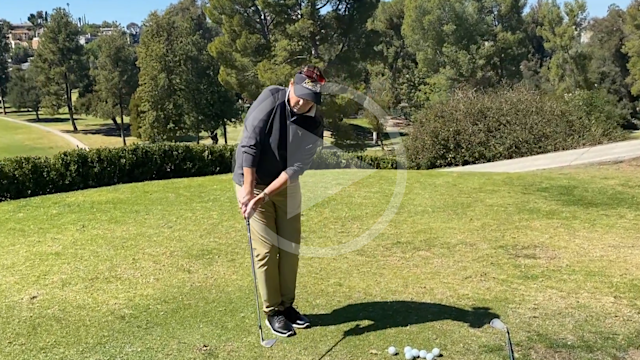quick coaching
Lesson Learned: Improving Comes with a Commitment to Focusing on One Swing at a Time
By Keith Stewart, PGA
Published on

Kiawah is coming. The 2012 PGA Champion Rory McIlroy showed why he is still one of the best players of his generation this week in Charlotte at the Wells Fargo Championship. Those who were watching McIlroy close out his third-career win at Quail Hollow saw a man who is still in the midst of cementing a swing change.
With a two-shot lead, McIlroy stood on the 72nd tee box with 3-wood in hand. A conservative choice, but he only needed a bogey to win. Creek down the left, fairway bunker down the right. At a time when all the young Irishman had to do was hit it right, his shot tracer drew an all too familiar path long and left.
As Rory approached his tee shot on 18 yesterday, he saw the ball was not in the creek. Just on the embankment. A horrific lie in the penalty area leads to a drop and then followed by a solid iron approach gives him two putts from 40 plus feet for the win. Looking back, an attempted swing enhancement in the fall of 2020 caused more harm than good. A missed cut at the 85th Masters about a month ago and the golf media would have us all believe Rory was done.
What’s most interesting about this weekend, Rory showed us all just how hard change is to accept in golf.
The former world number one, when he needed to believe in all of his hard work slipped. That left miss that plagued him all fall and into 2021 showed itself when he needed to perform. We all know golf is a difficult sport to play with complete confidence. Especially when we are working on an adjustment.
This is where our practice becomes such an important part of getting better. For most players, there’s this stigma, that practice only takes part on the range. As a PGA Coach, it’s important for my players to practice on the course. Not by hitting multiple shots from the same place, but by making sure shots count when you’re playing.
Here’s a cool way to test yourself the next time you bring a change to the course. While playing, keep score. Not the conventional way by counting your strokes, but rather by grading each full swing with a pass or fail score. You know what you’re working on with your PGA Coach. Did you pass the test and do it? Or did you use the old move you’re trying to change? As you play, take notice of your positive pass scores. Did you have more of those than the failing ones?Changing comes from true commitment to your work and an inner self-belief. This simple method works because it keeps you focused on one swing at a time. One change at a time. Add up those pass/fail scores and see how you did. Chances are, if you stay focused and committed, you’ll continue to improve at an accelerated rate.
Rory nestled that forty-footer up to a couple feet. He knocked in the bogey putt and he was back inside the winner’s circle. Although McIlroy probably wouldn’t have given himself a passing score on that last tee shot, he had more passing swings than failures over the course of the week.
Golf isn’t won or lost on one swing. It’s not enjoyed with just a single shot. The game is hard, and if you pass just one more swing than you fail then you too are going to succeed on your journey just like Rory.
Keith Stewart is a 5-time award-winning PGA Professional with 25 years of experience in the golf industry. His network of players, coaches and insiders provide him with a unique perspective on the game. He's a writer on PGA.com and host of the ProShow on ESPN 920 AM Friday afternoons at 3:00pm EDT. Check out his PGA Coaching articles archived here or his conversations on air with this link to his website The ProShow.


